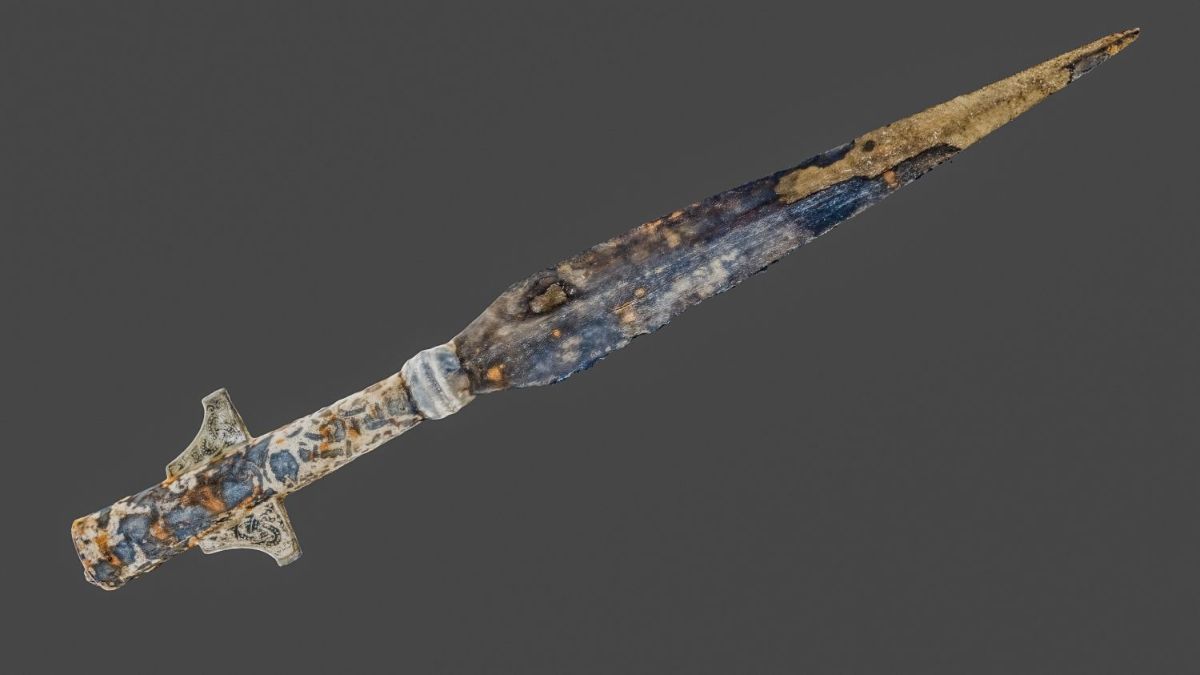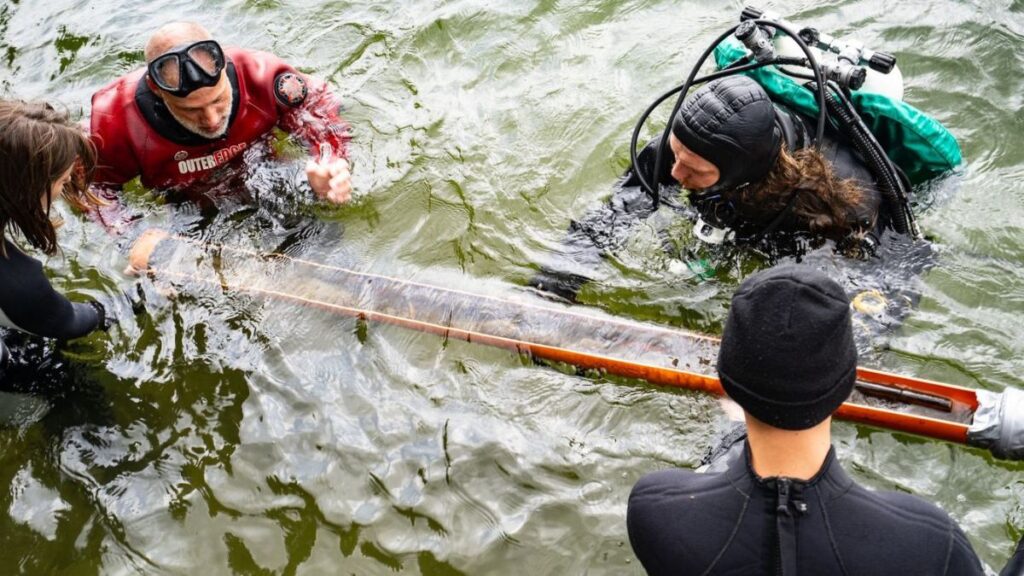Truth & Goodness
Putin Loses Control. Russia Is Becoming a Vassal State of China
24 November 2025

It lay hidden in the dark depths for a thousand years. When divers recovered this extraordinary find, the lake literally "unveiled" a secret from the Piast era. Just the first gleam of gold and silver on the spearhead was enough to know they did not hold an ordinary weapon. Is it possible that this royal armament, a major Piast dynasty spear find, belonged to Mieszko I or Bolesław the Brave?
“This spear did not belong to just anyone,” says Dr. Mateusz Popek from the Centre for Underwater Archaeology at Nicolaus Copernicus University (CAPU UMK).
This year’s underwater research in Lednica brought sensational results. The CAPU UMK team, led by Dr. hab. Andrzej Pydyn, recovered four early medieval spearheads.
One of them immediately captured attention—richly decorated, covered in precious metals, and lying at the bottom of the lake for over a thousand years. Subsequent analyses of the object revealed that this might be an exceptional artifact that witnessed the most crucial events related to Poland’s early history.
“This season was supposed to be calm, but it turned out to be one of the most exciting in recent years,” researchers from Toruń admit, quoted by the Archeologia Żywa portal.
Radiocarbon dating of the wooden shafts, conducted by Prof. Marek Krąpiec, Ph.D., D.Sc., Eng., from AGH University of Science and Technology, points to the turn of the 10th and 11th centuries—the times of Mieszko I and Bolesław the Brave. Did the weapon belong to one of Poland’s first rulers?
Each discovered spearhead tells a separate story. The first, almost complete, was embedded in an ash shaft 2.1 meters long. Its lower part is decorated with a rare ring made of deer antler.
The second spear has a slender, leaf shape and “wolf tooth” ornamentation created by welding different types of iron.
The third, the longest, was made using the pattern welding technique (dziwer)—intertwining metal strips with varying carbon content, which provided strength and a characteristic pattern.
But the real sensation is the spearhead archaeologists call the “Princely Spear.” Why? The finding is not just a weapon but a true work of art. An armament of this kind could not have been wielded by just any soldier.

The spearhead’s surface is covered with dense ornamentation—winding spirals and braided motifs resembling claws or bird beaks. Rows of tiny dots fill the background. However, that is not all.
Modern Macro XRF technology allowed researchers to discover the precise chemical composition of the spearhead’s surface. It turned out that the weapon consists of gold, silver, lead, copper, zinc, and tin. One element was cast in bronze and subsequently gilded and silver-plated.
Could a weapon of such quality belong to anyone other than a leader? The precious metals and intricate decoration point to a user from the highest social spheres. But is it truly a ruler’s spear?
The term “Princely Spear” sounds proud, but archaeologists emphasize that it is merely conventional. Scientists cannot definitively say who wielded this weapon. It could, of course, have been Mieszko I or Bolesław the Brave, but it could just as easily have belonged to someone in the Piast entourage. There are many options: a powerful commander, a court member, or even a high-ranking mercenary.
How did the spear end up in the lake? Researchers are considering two scenarios. The first: loss during fighting, possibly during the invasion by Duke Bretislav in 1038 or 1039. The second: intentional deposition in the water—a practice known in Central Europe both before and after the adoption of Christianity.
In this case, the spear would have been an offering to the gods, most likely those associated with death and the afterlife. This would not be an isolated case. Over decades, researchers have recovered over 280 historic weapons from the time of Mieszko I and Bolesław the Brave from the lake. Such a quantity is too great to be attributed to accidental losses. The armaments were deliberately placed in the lake.
The spearhead’s decoration shows similarities to patterns known from Scandinavia—triskelions (three joined spirals) or intertwined plants and animals are characteristic elements of Viking ornamentation. However, local blacksmiths might have created the weapon, merely inspired by the art of the northern peoples.
In the village of Rybitwy on the western shore of the lake, they found a gold fitting with a very similar triskelion motif. Therefore, the latest Piast dynasty spear is not an isolated incident. Are we dealing with an imported item or a war trophy, or is it the work of a Polish craftsman in the Scandinavian style? Further research may provide the answer.
Perhaps we will also learn who truly wielded the spear. Are we dealing with a princely artifact of the first Piasts on par with the Szczerbiec sword? If so, this Piast dynasty spear could completely change our view of Poland’s early history.
You can find more information about the discovery in Lednica in the video material below:
Read this article in Polish: Z dna Lednicy wydobyto książęcą włócznię. Czy należała do Mieszka I?

Science
23 November 2025


Zmień tryb na ciemny